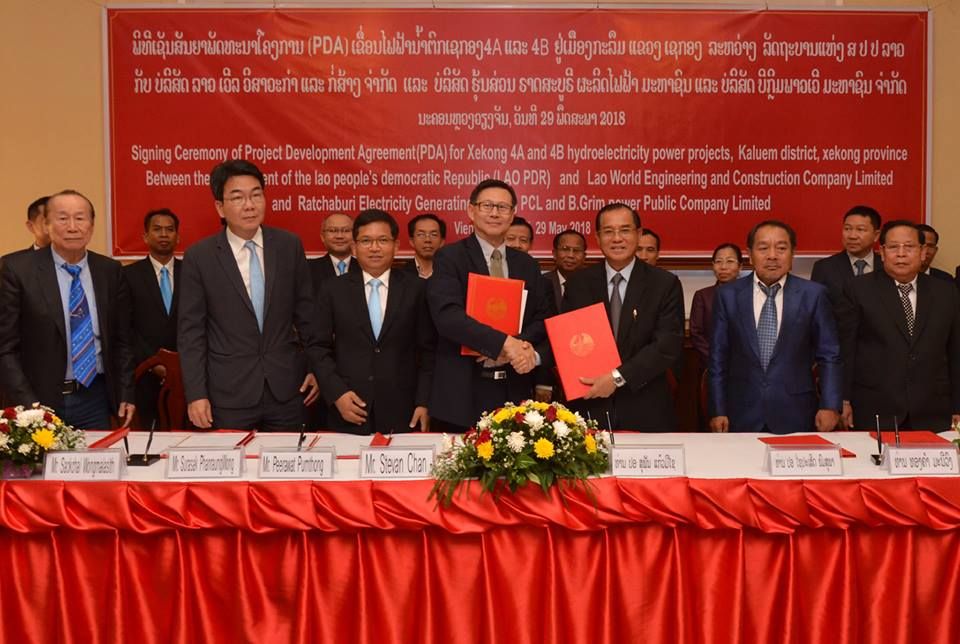Laos wants to start construction this year on the $3.8 billion Thai-financed Xayaburi hydropower plant on the Mekong River after changing the design to placate neighboring countries opposed to the project.
Laos completed a review of the dam initiated in April to ease concerns that it would harm rice production and fish catches downstream, said Viraphonh Viravong, director-general of the ministry of energy and mines’ Department of Electricity. Vietnam earlier recommended a 10-year delay for all hydropower projects on the river, which also runs through Myanmar, Thailandand Cambodia from its source in China’s Tibetan plateau.
“We would like to start toward the end of this year when the dry season comes,” Viraphonh said in an interview in Hanoiyesterday. “We want to explain and make the other countries comfortable. If they are still very negative about it, of course we will spend some more time on it.”
The hydropower plant is the first among eight that Laos plans to build on the Mekong to expand Southeast Asia’s smallest economy by selling electricity to neighboring countries. The landlocked nation may have about 38,000 megawatts of installed capacity supply by 2020, about 15 times greater than its domestic needs, according to a presentation by state-owned Electricite du Laos at a conference in Hanoi yesterday.
Independent Review
Laos presented the project review conducted by Switzerland-based Poyry Energy AG to Vietnam and plans to meet separately with Thai and Cambodian officials to discuss recommendations, Viraphonh said. The government can decide whether to proceed with the project at any point.
In April, Laos proposed to end a review of Xayaburi called for under a 1995 agreement between the Mekong countries requiring prior consultations before building hydropower plants on the river. Officials agreed then to hold a ministerial meeting to discuss the project, a gathering that has yet to take place.
“Laos has no right to go forward on the project by itself,” said Ame Trandem, Southeast Asia program director for International Rivers, a Berkeley, California-based nonprofit group that aims to protect rivers and human rights. “By doing so it will violate the 1995 Mekong agreement and the spirit of regional cooperation.”
Meeting Guidelines
Poyry’s review found that Xayaburi’s design was in accordance with the preliminary design guidelines from theMekong River Commission, an intergovernmental body, and other international design manuals, Viraphonh said in a presentation. The company recommended improvements for sediment transport and fish-passing facilities, he said.
Poyry is confident “any potential long-term trans-boundary impacts on the downstream region would be insignificant” if the recommended design changes are implemented, according to the presentation.
“Look, this has been reviewed by an independent engineer, very famous in the world,” Viraphonh said yesterday. “And if they say ’yes, you can go ahead,’ why not?”
Thailand agreed in December to buy 95 percent of the electricity from the plant, which will have a capacity of 1,285 megawatts. Ch. Karnchang Pcl, Thailand’s third-biggest construction company by market value, owns a 57.5 percent stake in Xayaburi.
Supamas Trivisvavet, an executive vice president at the company, declined to comment when reached by phone today.
Clinton Concern
PTT Pcl (PTT), Thailand’s biggest energy company, has a 25 percent stake, while Bangkok-based Electricity Generating Pcl owns 12.5 percent, according to company filings. The 115 billion baht ($3.8 billion) project is expected to start commercial operations in January 2019, PTT told the Thai stock exchange on March 1.
The proposed alterations would slightly increase the cost of the project, Viraphonh said, without providing figures. The plant would be able to meet its target completion date if work started later this year, he said.
The Mekong and its tributaries provide food, water and transportation to about 60 million people in the four countries. In a July meeting with counterparts from Mekong nations in Bali, U.S. Secretary of State Hillary Clinton called for a pause in construction of dams on the river “until we are all able to do a better assessment of the likely consequences.”
Food Security
Vietnam officials in January recommended delaying the project and moving it to a Mekong tributary because it would affect “the safety of water sources and food security for Vietnam as well as for the whole world,” according to notes of the meetings. Thailand and Cambodia also favored more studies on the dam, the notes show.
A technical review in March by the Mekong River Commission found that the dam may lead to the extinction of species like the Mekong giant catfish and “gaps in knowledge” mean the full extent of the downstream impact on fisheries is hard to estimate. The dam “will not materially affect” the quantity and timing of river flows to Cambodia and Vietnam, it said.
Laos has about six million people and a gross domestic product of $5.6 billion, according to statistics from theAssociation of Southeast Asian Nations. Hydropower and mining projects are set to underpin GDP growth that may reach 7.7 percent this year, the Asian Development Bank said in an April 7 report.

